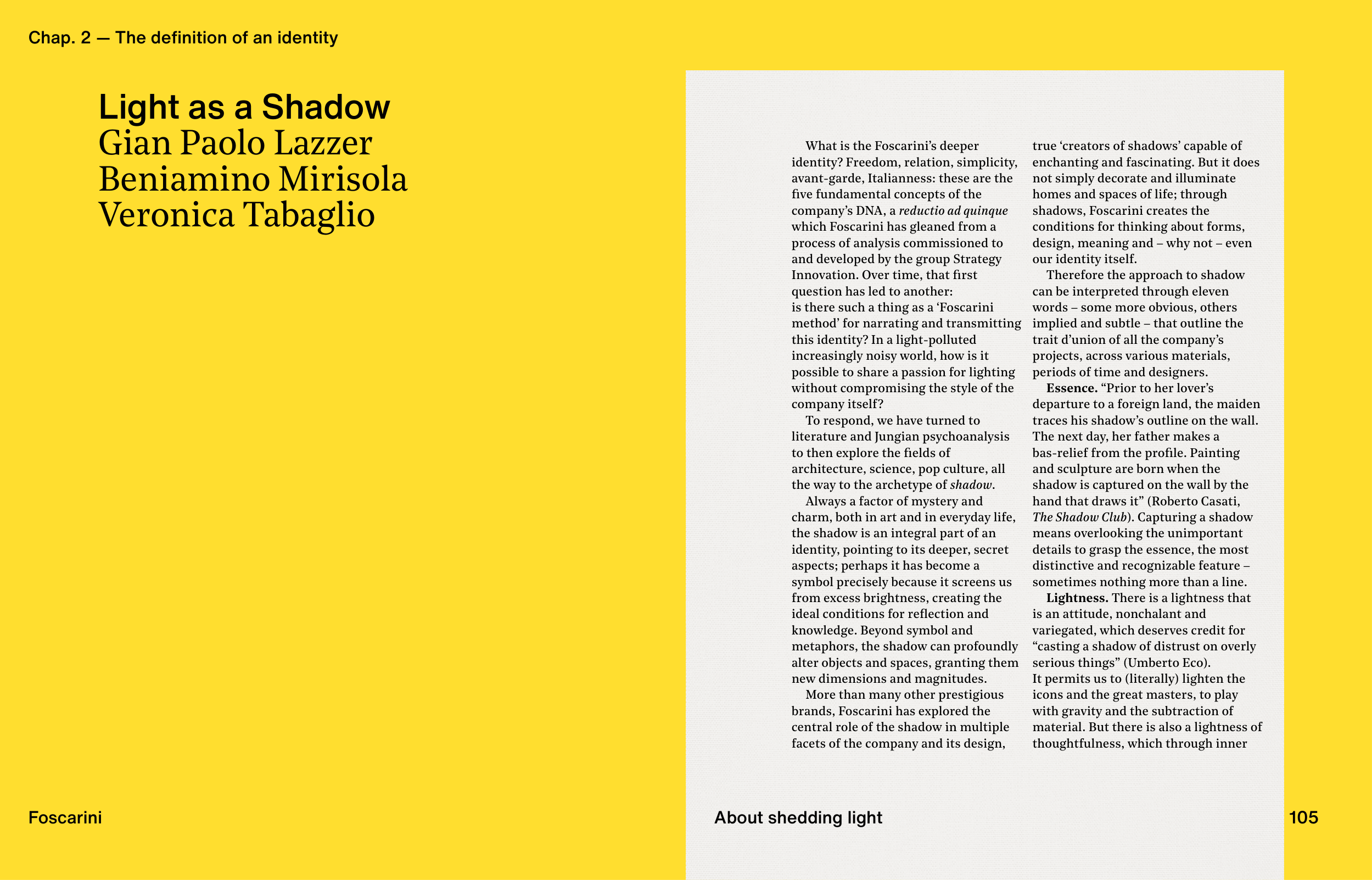105
Foscarini
Chap. 2 — The defi nition of an identity
Light as a Shadow
Gian Paolo Lazzer
Beniamino Mirisola
Veronica Tabaglio
About shedding light
What is the Foscarini’s deeper
identity? Freedom, relation, simplicity,
avant-garde, Italianness: these are the
fi ve fundamental concepts of the
company’s DNA, a reductio ad quinque
which Foscarini has gleaned from a
process of analysis commissioned to
and developed by the group Strategy
Innovation. Over time, that fi rst
question has led to another:
is there such a thing as a ‘Foscarini
method’ for narrating and transmitting
this identity? In a light-polluted
increasingly noisy world, how is it
possible to share a passion for lighting
without compromising the style of the
company itself?
To respond, we have turned to
literature and Jungian psychoanalysis
to then explore the fi elds of
architecture, science, pop culture, all
the way to the archetype of shadow.
Always a factor of mystery and
charm, both in art and in everyday life,
the shadow is an integral part of an
identity, pointing to its deeper, secret
aspects; perhaps it has become a
symbol precisely because it screens us
from excess brightness, creating the
ideal conditions for refl ection and
knowledge. Beyond symbol and
metaphors, the shadow can profoundly
alter objects and spaces, granting them
new dimensions and magnitudes.
More than many other prestigious
brands, Foscarini has explored the
central role of the shadow in multiple
facets of the company and its design,
true ‘creators of shadows’ capable of
enchanting and fascinating. But it does
not simply decorate and illuminate
homes and spaces of life; through
shadows, Foscarini creates the
conditions for thinking about forms,
design, meaning and – why not – even
our identity itself.
Therefore the approach to shadow
can be interpreted through eleven
words – some more obvious, others
implied and subtle – that outline the
trait d’union of all the company’s
projects, across various materials,
periods of time and designers.
Essence. “Prior to her lover’s
departure to a foreign land, the maiden
traces his shadow’s outline on the wall.
The next day, her father makes a
bas-relief from the profi le. Painting
and sculpture are born when the
shadow is captured on the wall by the
hand that draws it” (Roberto Casati,
The Shadow Club). Capturing a shadow
means overlooking the unimportant
details to grasp the essence, the most
distinctive and recognizable feature –
sometimes nothing more than a line.
Lightness. There is a lightness that
is an attitude, nonchalant and
variegated, which deserves credit for
“casting a shadow of distrust on overly
serious things” (Umberto Eco).
It permits us to (literally) lighten the
icons and the great masters, to play
with gravity and the subtraction of
material. But there is also a lightness of
thoughtfulness, which through inner
105


